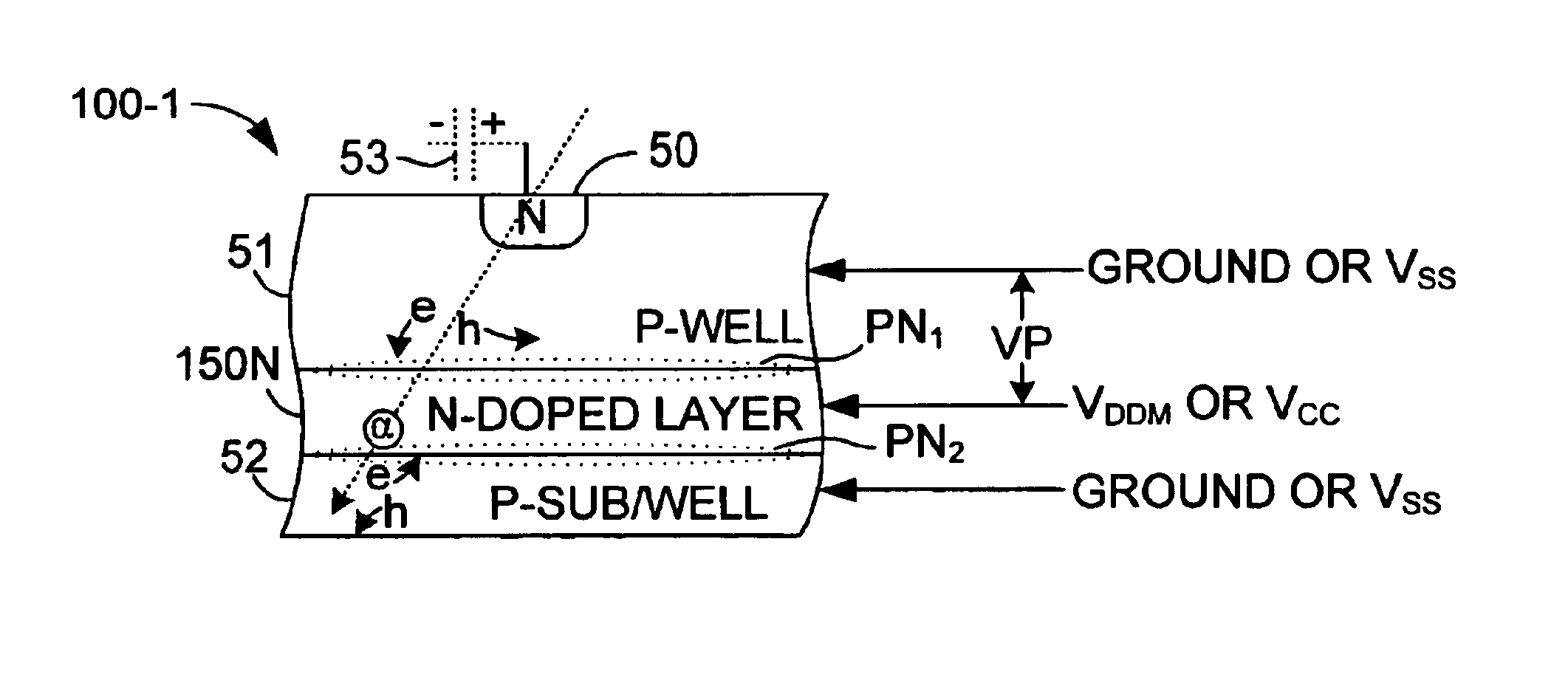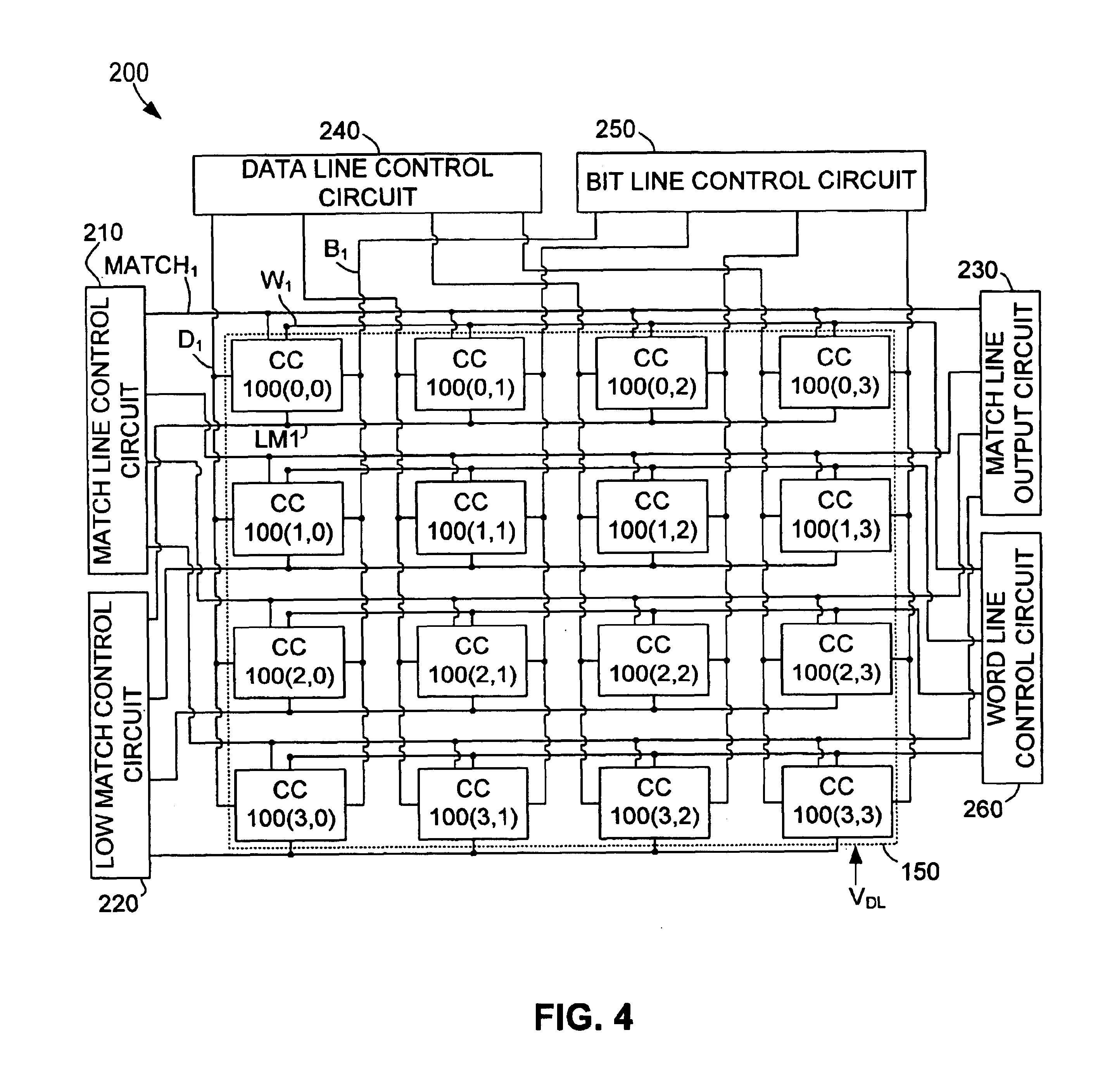CAM circuit with radiation resistance
a cam circuit and radiation resistance technology, applied in the field of low-power cam arrays, can solve the problems of significantly more power, noise generation, and significant power needed (and generated) in the cam array, and achieve the effect of reducing the chance of “soft error” discharge and increasing the cost and power consumption of the cam circui
- Summary
- Abstract
- Description
- Claims
- Application Information
AI Technical Summary
Benefits of technology
Problems solved by technology
Method used
Image
Examples
Embodiment Construction
[0024]The present invention is described below with specific reference to binary SRAM CAM cells and ternary DRAM CAM cells. However, it is noted that the present invention can be extended to include other types of CAM cells, including ternary and quad (four-state) SRAM CAM cells, as well as binary DRAM CAM cells. Further, the specific CAM cell embodiments described herein are intended to be exemplary, and not limiting (unless otherwise specified in the claims).
[0025]FIG. 2 is a block diagram showing a simplified CAM cell 100 in accordance with the present invention. CAM cell 100 includes a data memory cell 110 and a comparator (logic) circuit 120 that are fabricated using CMOS techniques. In one embodiment, both data memory cell 110 and comparator circuit 120 are formed using at least one n-channel transistor having an n-doped storage region (junctions) formed in a p-type well, which in turn is formed in a p-type substrate (or in a larger p-type region formed in an n-type substrate)...
PUM
 Login to View More
Login to View More Abstract
Description
Claims
Application Information
 Login to View More
Login to View More - R&D
- Intellectual Property
- Life Sciences
- Materials
- Tech Scout
- Unparalleled Data Quality
- Higher Quality Content
- 60% Fewer Hallucinations
Browse by: Latest US Patents, China's latest patents, Technical Efficacy Thesaurus, Application Domain, Technology Topic, Popular Technical Reports.
© 2025 PatSnap. All rights reserved.Legal|Privacy policy|Modern Slavery Act Transparency Statement|Sitemap|About US| Contact US: help@patsnap.com



